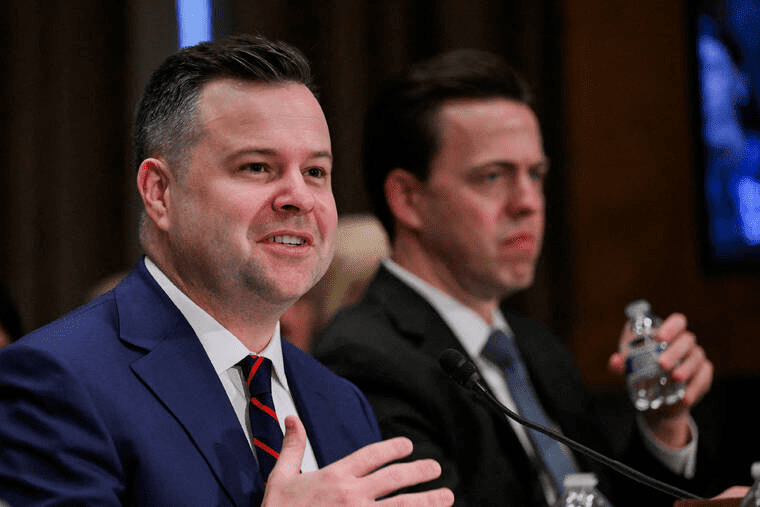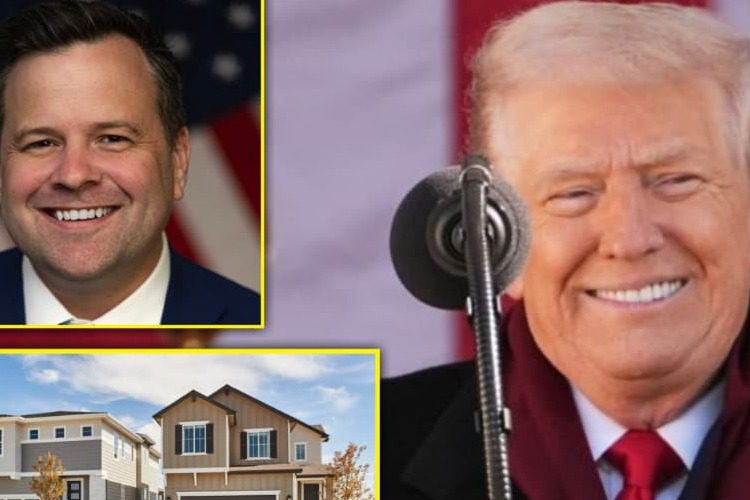Trump Administration Pushes “Portable Mortgages” Plan — A Game-Changer That Lets Homeowners Keep Low Interest Rates When They Move
A new proposal quietly emerging from Washington is sending ripples through the housing industry — and it’s coming straight from the Trump administration. Federal Housing Finance Agency Director Bill Pulte has confirmed that officials are actively evaluating a revolutionary idea known as “portable mortgages,” a concept that could completely transform the way Americans buy and sell homes. For millions struggling under the weight of high mortgage rates, this could be the first real breakthrough in decades.
The plan would allow homeowners to take their existing mortgage — including the same lender, interest rate, and repayment terms — and move it with them when they buy a new home. That means no new loans, no inflated refinancing rates, and no early repayment penalties. In practice, it could save families thousands of dollars and bring long-overdue flexibility to an industry notorious for punishing people every time they move.

“Instead of taking out a completely new mortgage,” Pulte explained, “you’d use the money from your home sale to pay off your existing loan and simply transfer it to a new property under the same terms.” That one sentence, simple as it sounds, marks one of the most significant potential policy shifts in U.S. housing finance since the 1980s. For an administration that has repeatedly promised to put homeownership within reach of working Americans, it’s a powerful message — and a practical one.
Under current U.S. mortgage rules, even homeowners with excellent credit who locked in low rates before the 2022 rate hikes are forced to give up their loans when moving. They’re left facing market rates that can be double what they were paying before — a financial trap that has frozen the housing market. Economists estimate that nearly 80% of homeowners are currently “rate locked,” unwilling to move because it would mean replacing their 3% loan with one closer to 7%.
Trump’s team sees portable mortgages as a way to free that gridlock. By allowing people to take their existing loans with them, the plan could reignite home sales, unfreeze housing supply, and save families an average of $5,000 to $10,000 in refinancing and closing costs, according to Consumer Financial Protection Bureau data. “We want to make moving affordable again,” Pulte told reporters. “This plan keeps families mobile, keeps the economy fluid, and helps people avoid being trapped by their mortgage.”

The idea isn’t new — versions of portable mortgages have long existed in countries like Canada, the U.K., and Australia. But it’s new to the American market, where mortgage-backed securities and lender risk models have historically discouraged such flexibility. Bringing portability to the U.S. would require coordination between major lenders, Fannie Mae, Freddie Mac, and the Federal Housing Finance Agency. Still, Pulte has hinted that the administration’s early conversations have been productive, and the political appetite for reform is there.
For Trump, this move fits perfectly into his larger economic narrative. His message has always been about empowerment — putting control back into the hands of ordinary Americans. Affordable energy, lower taxes, and strong borders have defined his policy agenda; now, housing could become the next frontier. With interest rates climbing and home affordability hitting record lows, a fresh approach that promises tangible relief could become a winning campaign issue.

The reaction has been immediate and divided. Supporters have hailed the proposal as “common sense for the modern economy,” saying it addresses a real pain point that Washington has ignored for years. Homeowners who have been sitting on their properties, unable to move for fear of losing their low-rate mortgages, see it as a lifeline. Realtors, too, are cautiously optimistic, predicting a surge in home listings if portability becomes reality.
Critics, however, argue that the plan could complicate the secondary mortgage market. By making existing loans transferable, lenders could face new layers of risk if mortgage-backed securities become harder to price. Some analysts warn that banks may respond by raising initial rates to offset potential losses. But Trump’s economic team believes those concerns are overstated — and that competition in the market will naturally adjust. As one senior administration official put it, “If other nations can make this work, so can the United States.”

Pulte, a longtime advocate of innovative housing solutions, has become the public face of the idea. Known for his philanthropic “Twitter philanthropy” initiatives and strong presence on social media, he has spent the past year working to rebrand the FHFA as an agency focused on consumer empowerment rather than bureaucracy. Earlier this year, his proposal for 50-year mortgages drew backlash for being too favorable to lenders, but portable mortgages have been met with far more enthusiasm. They represent a policy shift that benefits the average homeowner directly — saving money, time, and paperwork, all without adding debt.
The timing of the announcement also feels strategic. With home sales slumping and affordability at a two-decade low, the housing market has become one of the biggest political vulnerabilities in Washington. A poll released last month by Pew Research showed that 68% of Americans view housing costs as a “major national problem.” Portable mortgages — even if still in the discussion phase — offer the kind of forward-looking, solution-oriented headline that cuts through cynicism.
Industry insiders are paying attention. Mortgage giant Freddie Mac issued a statement acknowledging the potential “efficiency gains” of portability, while cautioning that implementation would “require careful coordination and financial safeguards.” Fannie Mae’s economists have noted that housing demand remains strong but constrained by the “interest rate lock-in effect,” suggesting that any move to free that constraint would benefit the broader economy.

Consumer groups, meanwhile, see the plan as long overdue. The National Homeowners Association issued a statement praising the initiative, calling it “a rare example of Washington looking out for Main Street homeowners instead of Wall Street lenders.” A number of veterans’ organizations have also expressed support, saying portable loans would particularly benefit military families forced to relocate frequently.
If approved, the program could be rolled out gradually, beginning with FHA-backed loans before expanding to the private market. Administration sources say the idea is being reviewed for integration into broader housing reforms set to be unveiled early next year, part of what insiders are calling “The American Home Revival Plan.”
To its supporters, this isn’t just a financial reform — it’s a cultural reset. It’s about restoring the mobility and confidence that once defined the American dream. “When a family can move for a better job, a better school district, or just a better life without being crushed by new debt, that’s freedom,” one policy advisor said. “That’s what we’re trying to bring back.”
The proposal comes at a politically charged time. With the 2026 midterms approaching, and President Trump’s team pushing hard to showcase tangible results, portable mortgages could become a signature policy success. Economically, it aligns with Trump’s pro-growth philosophy. Emotionally, it taps into something deeper — the yearning of millions of Americans to reclaim stability in uncertain times.
Whether or not the plan survives regulatory hurdles, it’s already sparked a national conversation. In a housing market defined by stagnation, the mere idea of portability feels like movement — a reminder that even entrenched systems can change. And in a political era often defined by division, this proposal, with its blend of practicality and innovation, has struck an unusually unifying chord.


